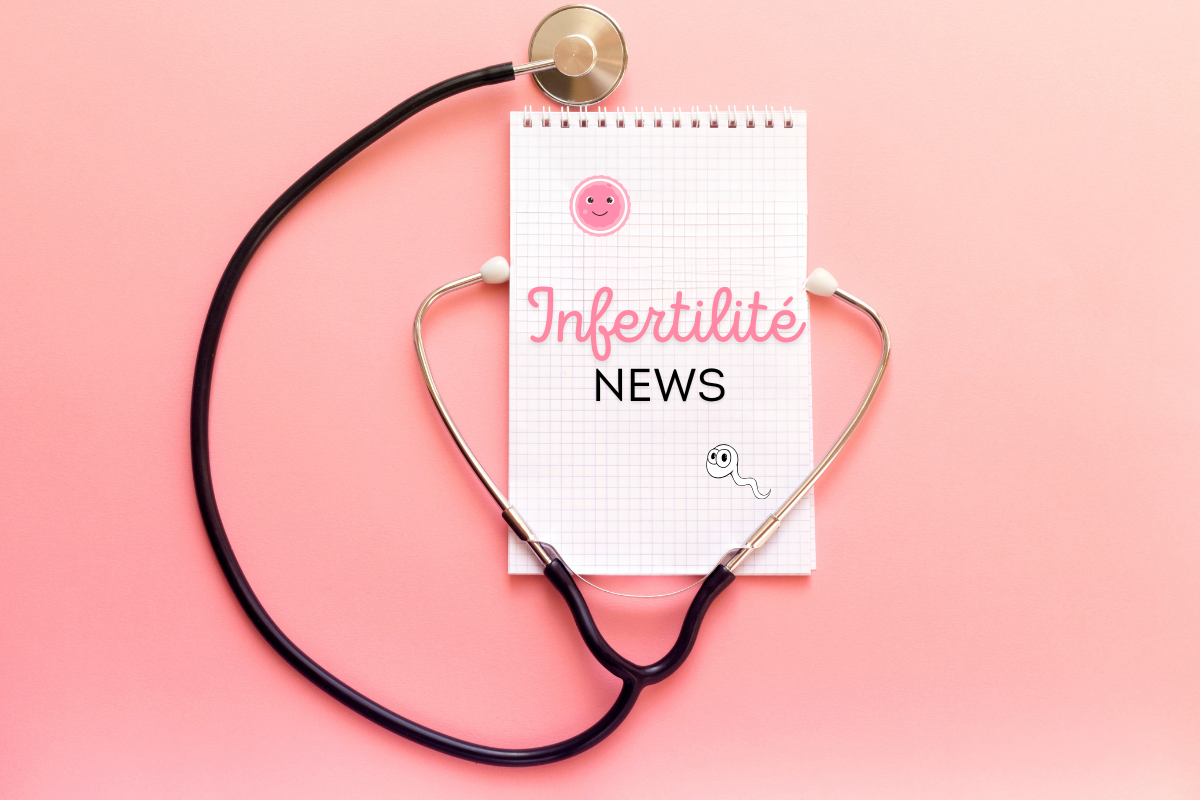Infertility is a reality that affects more and more couples. According to the latest estimates, one couple in four has difficulty conceiving, a figure that has been rising in recent decades. The cause? A combination of medical, environmental and societal factors that influence fertility in both men and women. In this article, we explore the main causes of infertility. Then we’ll try to understand how our environment and lifestyle can also play a role.
Infertility in figures: a growing problem
The average age of women at the time of their first pregnancy continues to fall. In 1975, it was 24, compared with 28.8 in 2019. Female fertility naturally declines with age, particularly after 30 and more markedly after 35. But age does not explain everything.
Many other medical and environmental factors influence couples’ fertility. In addition, certain pathologies, hormonal imbalances and even pollution and modern diet are now being blamed as causes of infertility.
Medical causes of infertility
Infertility is defined as a couple’s inability to conceive after one year of regular unprotected intercourse. It can be of female, male or mixed origin.
In women: hormonal and mechanical causes of infertility
Female infertility can be linked to a number of health problems, including hormonal disorders that disrupt ovulation. There are also mechanical causes affecting the reproductive system. These dysfunctions make conception more difficult and often require appropriate treatment.
Hormonal causes: a disturbance in the menstrual cycle disrupts fertility
Ovulation, which is essential for conception, is regulated by a complex balance of hormones. A hormonal imbalance can prevent the ova from maturing or make the uterus less receptive to implantation.
- Polycystic ovary syndrome (PCOS): this is one of the leading causes of infertility in women. PCOS affects around 1 in 10 women and is characterised by an overproduction of androgens (male hormones), which disrupts ovulation. The result is irregular menstrual cycles, or even no ovulation at all. There is also excessive production of ovarian follicles, with no release of the egg. As well as an increased risk of insulin resistance, which can worsen infertility.
Solutions: Appropriate medical monitoring (diet, physical exercise, hormone treatments) can help regulate the cycle and improve fertility.
- A thyroid that is too active(hyperthyroidism) or too slow(hypothyroidism) can unbalance the menstrual cycle and affect ovulation. The thyroid influences the production of sex hormones such as progesterone and oestrogen.
Solutions: A TSH blood test can detect a thyroid disorder and, if necessary, initiate treatment.
- Hyperprolactinaemia: prolactin is a hormone that plays a key role in milk production after childbirth. But when it is secreted in excess outside pregnancy or breastfeeding, it can interfere with ovulation.
Solutions: Identify the cause (stress, benign pituitary tumour, taking certain medications) and adapt the treatment.
Mechanical causes: physical obstacles to conception
Even if ovulation proceeds normally, anatomical anomalies may prevent the egg and sperm from meeting or make it difficult for the embryo to implant in the uterus.
- Endometriosis, a little-known disease: Endometriosis affects around 10-15% of women of childbearing age. The disease is characterised by the presence of endometrial tissue outside the uterus (ovaries, fallopian tubes, intestines, etc.). In response, this tissue can cause chronic inflammation. They can also form cysts or adhesions that block the fallopian tubes.
Solutions: Although endometriosis does not systematically lead to infertility, medical follow-up and sometimes surgery are necessary to restore fertility.
- Blockage of the fallopian tubes: the fallopian tubes allow the passage of the egg to the uterus. If they are blocked, fertilisation becomes impossible. This obstruction may be due to untreated gynaecological infections (such as chlamydia or gonococcal infections). It can also be caused by a history of pelvic surgery or endometriosis.
Solutions: Surgical intervention (laparoscopy) can sometimes restore tubal patency, but in cases of severe obstruction, in vitro fertilisation (IVF) is often necessary.
- Uterine malformations: some women are born with uterine anomalies (septate uterus, bicornuate uterus, etc.). These make implantation more difficult or increase the risk of miscarriage.
Solutions: Some malformations can be corrected by surgery.
In men: frequent sperm anomalies leading to infertility
Contrary to popular belief, infertility is not just a female problem. In almost half the cases, men are affected, either alone or in combination with a female factor. Male fertility depends primarily on good sperm quality, i.e. the concentration, mobility and morphology of the spermatozoa. When an imbalance or anomaly affects these parameters, conception may be more difficult or even impossible.
Varicocele, the leading cause of male infertility
This is an abnormal dilation of the veins of the spermatic cord, located around the testicles. It is common, affecting around 15% of men in general, and up to 40% of infertile men. This condition disrupts blood flow to the testicles, leading to an increase in testicular temperature, which is detrimental to sperm production. It also leads to increased oxidative stress (cellular damage to the spermatozoa) and impaired sperm mobility (reducing their ability to fertilise the egg).
Solutions: In cases where varicocele significantly impairs fertility, surgery(varicocelectomy) may be considered to improve sperm production and quality.
Hormonal and genetic disorders, which have a direct impact on spermatogenesis
Spermatogenesis is controlled by a precise hormonal balance. Any imbalance in sex hormones can disrupt spermatogenesis and lead to infertility. For example:
- Testosterone deficiency: Testosterone is the key hormone in male fertility. Insufficient production can reduce the quantity of spermatozoa and impair their quality. This deficiency may be linked to pituitary disorders, testicular abnormalities or premature ageing.
- Hyperprolactinaemia: Excessive secretion of prolactin (a hormone normally involved in female lactation) can block testosterone production and lead to fertility problems.
- Genetic abnormalities: Some men have mutations or chromosomal abnormalities that affect their fertility. Klinefelter‘s syndrome (presence of an extra X chromosome) results in reduced or absent sperm production.
- Microdeletions of the Y chromosome, affecting certain genes essential for spermatogenesis.
Solutions: Depending on the origin of the problem, the doctor will suggest a hormone treatment. In some cases of genetic infertility, only medically assisted procreation(MAP), such as in vitro fertilisation(IVF) with intracytoplasmic sperm injection(ICSI), can enable conception.
The impact of environmental factors on fertility: pollution, diet and stress
While the medical causes of infertility are well known, the environment and lifestyle also play a crucial role in reducing fertility in both men and women. In recent decades, scientists have observed a worrying increase in reproductive disorders, coinciding with growing exposure to harmful substances, unbalanced diets and stressful lifestyles. Pollutants, endocrine disruptors, a sedentary lifestyle, smoking and chronic stress have all been identified as aggravating factors. Their impact is all the more worrying in that it can affect several generations, permanently altering hormonal balance and the quality of gametes.
Among the most alarming observations, one trend in particular stands out: the spectacular fall in sperm counts in industrialised countries.
An alarming drop in sperm counts
For several decades now, researchers have been observing a collapse in sperm concentration in men. Between 1973 and 2011, studies show a drop of more than 50% in the number of sperm per millilitre of semen. And the trend does not seem to be reversing. This phenomenon, which mainly affects developed countries, raises a major question: what is it about our environment and lifestyle that is altering male fertility to such an extent?
The role of lifestyle
Our habits also influence fertility. Among the aggravating factors are :
- Tobacco, alcohol and cannabis, which affect the quality of gametes. They also reduce sperm mobility and increase sperm DNA fragmentation, which complicates fertilisation and increases the risk of miscarriage.
- An unbalanced diet, low in essential nutrients (omega-3, zinc, vitamins B and D).
- Obesity, which affects hormonal balance and can lead to ovulation problems and a drop in sperm production.
- Stress, an often underestimated factor that can disrupt ovulation and reduce libido.
- Endocrine disruptors: These chemical substances mimic or block natural hormones, disrupting spermatogenesis. They are found in plastics (bisphenol A), certain cosmetics and household products and in food packaging.
- Pesticides and heavy metals: Found in the air, water and food, they can affect fertility by reducing sperm count and increasing oxidative stress in the testicles.
The psychological impact of infertility: still a taboo subject
In addition to the medical and environmental aspects, infertility is also an emotional ordeal. The stress of repeated failures, social pressure and the uncertainty of the medical process can have an impact on the morale of the couples concerned. Don’t hesitate to open up a dialogue, get the right support and consult a professional. Fertility is a complex subject, but there are ways of improving your chances of conceiving! Do you need personalised support? Consult a fertility professional or a micronutrition specialist for an assessment tailored to your situation.
Conclusion
If a woman is having difficulty conceiving after 12 months of trying (or 6 months if she is over 35), a consultation with a gynaecologist or fertility specialist is essential. A hormonal check-up and imaging tests (ultrasound, hysterosalpingography) will help to identify a possible cause and guide you towards the most appropriate solution. A healthier lifestyle can improve fertility in just a few months! As the sperm production cycle lasts around 3 months, improvements can be felt relatively quickly following dietary and behavioural changes. Each case is unique, but solutions do exist!
Source:
- https://www.inserm.fr/dossier/infertilite/
- https://www.urologyhealth.org/healthy-living/urologyhealth-extra/magazine-archives/spring-2018/did-you-know-varicocele
- https://academic.oup.com/humupd/article/23/6/646/4035689





